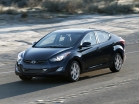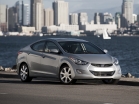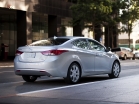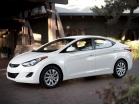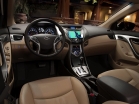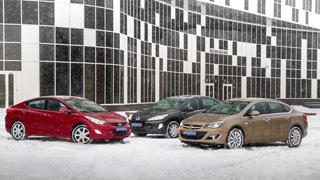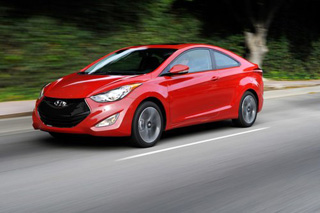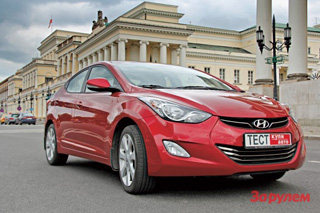Hyundai Elantra sedan test drive since 2010 sedan
Hyundai Elantra and Renault Fluence: South Korea or France?
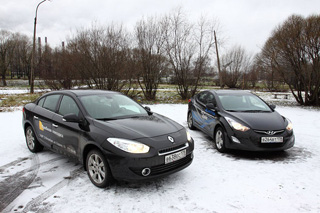 Kolesa.ru pushes the foreheads of two sedans of C-class, confidently striving for the class above, and finds out what such a high price of the new Hyundai Elantra is made of and what Renault Fluence brought after the MEgane sedan departure.
Kolesa.ru pushes the foreheads of two sedans of C-class, confidently striving for the class above, and finds out what such a high price of the new Hyundai Elantra is made of and what Renault Fluence brought after the MEgane sedan departure. Very often, the confrontation of cars on a comparative test can be described by almost a football phrase Germany against Japan. And for the stereotypical thinking of Russians, these two manufacturers are quite enough. Indeed, according to generally accepted opinions, good cars can do either the Japanese or Germans. Other brands are considered exclusively by residual principle.
Renault Fluence and Hyundai Elantra are not included in any top list for sales in Russia. But both Renault and Hyundai know the approach to domestic customers, having models, which are literally sweeping from the shelves of show rooms. Maybe it's about appearance?
Elantra is much prettier. Elegant overflows of the body harmonize both with the aggressive gaze of optics and with many ribs protruding on the corps. The only thing that is embarrassed by the painfully great silhouette Elantra resembles a SOLARIS budget. The owners of the latter are definitely flattered.
Renault Fluence looks more restrained and somehow disproportionate. The chubby sides against the background of small wheeled arches visually thicken the figure of the Frenchman, and the pulled and lifted feed, although it is a continuation of the window sill, does not fit into the general image of the sedan. Even solid black does not save.
But, judging by the sales of the same Renault Logan, potential buyers in Russia are much more concerned about what is inside the car than how it looks outside. In the end, do not drink water from the face.
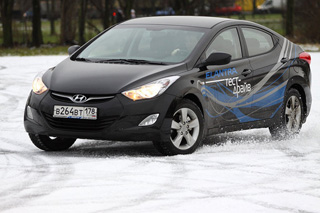
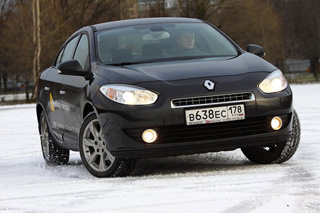
Unlike the same Renault Scenic with its drawn shield located in the center of the torpedo, the Fluence interior looks traditional. Moreover, so that there is simply nothing to catch the eye. But, this does not prevent a strict salon from remaining cozy. The quality of the finishing materials is worthy of praise, and only minor branded shortcomings are diluted with good ergonomics, such as the cruise-control activation button located next to the handbrake.
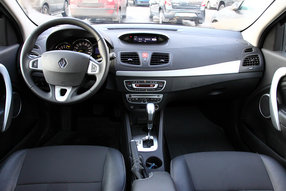

Renault Fluence
The complete opposite of the interior of the Hyundai Elantra interior. It is felt that Korean artists came off here in full. The mass of converging and diverging lines and influxes form various figures on the front panel of the Elans, creating, as a result, a single image. However, in their art, the designers clearly overdid it: the abundance of polished overlays of different colors from inexpensive plastic is not a reason for delight. But the fit of the interior details cannot be found.
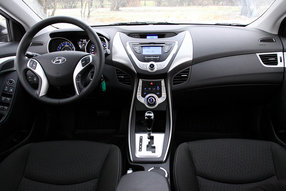
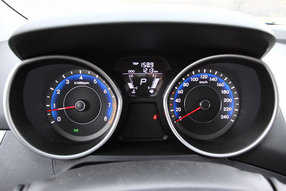
Hyundai Elantra
Both cars are good in terms of convenience. There is no need to complain about the lack of space in front or back. However, the seats of the Korean sedan are better and more tenaciously hold both the driver and passengers. When landing, the three on the second row of seats will be more convenient again with Hyundai: in Renault, due to the high tunnel in crowded, the legs of the central rider will be in closely. But Flyuns has more trunk: 530 liters versus 485. True, neither the French nor Koreans have deigned the internal handle on the cover of the cargo compartment.
Although the engines of compared cars are not very different in the number of horsepower (Renault Fluance has 138 of them, and Hyundai Elantra 132 has them), they endow the cars with completely different characteristics. And all because the French sedan near the hood has a two -liter power unit, and Korean only 1.6. And gearboxes, despite the fact that both automatic, differ. Elantra has a classic hydromechanical with six steps, and flies has a stranded variator.
In Renault, the motor and box tandem pleases, first of all, with its elasticity. A good supply of traction in the average revolutions allows you to quickly and quickly control overclocking. True, it will not work to call the dynamics of the impressive 10 seconds to a hundred. Hyundai Elantra, according to the passport, is even slower. Yes, and 132 horses squeezed out of a low -volume engine, manifest themselves only after 4,500 revolutions.
The settings of the chassis and steering allow Enlant to be more gambling, although the electrical power still does not give an objective connection on the steering wheel. But, a fairly sensitive floor gas pedal brings to press it more often.
Renault Fluence, on the contrary, the apologist for comfort, tranquility and security. An omnivorous suspension and smooth reactions to any actions of the driver, even with a two -liter heart, instantly relax. I don’t want to rush somewhere at all. This was also confirmed when, for the winning frame, we decided to a little fucking at the venue and slightly dispersed site.
Equipped ESP Flyens, with all his might resisted attempts to drive on it in sliding. The unknown stabilization system was strangled by the Renault engine at the slightest demolition of the French sedan from the trajectory, while the Elantra, devoid of the safety collar, gives the driver the opportunity to introduce and remove the car out of the drift.
As a result, to say clearly which car we liked more quite hard. As a family car, and Fluence, and Elantra will not disappoint their future owners. And the choice, rather, will depend on the character of the driver. Renault is more suitable for a calm and thorough person, while the handele will choose more emotional and more wealthy.
Yes exactly. Since it is impossible to understand what they are counting on in Hyundai, having prescribed an Elanter of such a price tag. Yes, the basic equipment of the Korean sedan with a 1.6 engine and automatically looks better than many competitors: ABS, 6 airbags, air conditioning, MP3-magnetol, cast discs and metallic color. But there is such a version, no less, 816 900 rubles.
The Renault Fluence tested with a 2.0 engine (138 hp) and an automatic transmission, not inferior to the Elanter in the standard equipment, richer on ESP, separate climate control, cruise control, as well as rain and light sensors pulled 771,100 rubles.
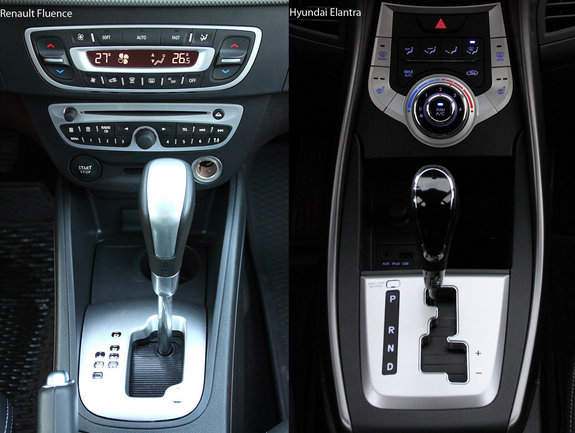

Source: Wheel magazine [December 2011]

